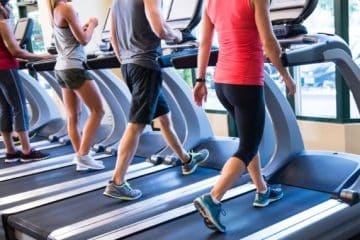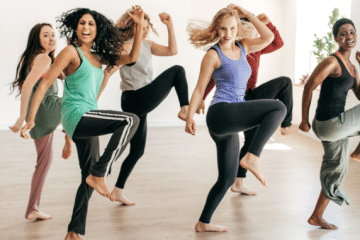Balance is important for everyone, but it is especially crucial as we age. One in every four Americans aged 65 and older falls each year, emphasizing the critical need for incorporating balance exercises to avoid falls. Falls are the number one cause of fatal injuries, and the most common cause of nonfatal trauma-related hospital admissions among the older population.
Falls hurt the individuals involved and also contribute to the spending of billions of medical dollars each year. The number of older adults falling and the burden on the healthcare system is only expected to rise in the future. Luckily, you can use balance, coordination, and strength exercises to keep your body strong and stable.
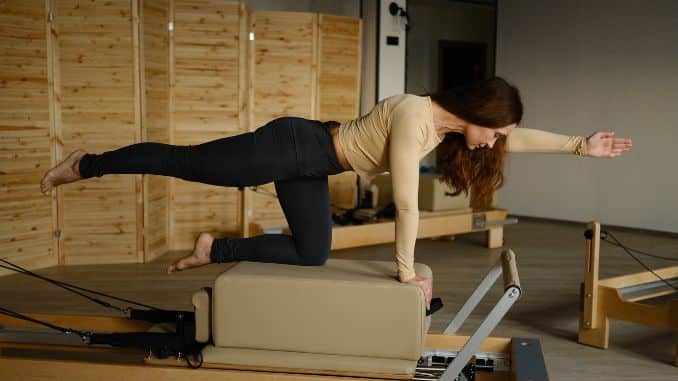
In this article, we share four balance exercises you can do every day to help improve your balance as you age. We have utilized various stability tools, but you can use a folded up blanket or pillow as a substitute if needed. Always make sure that you are in a safe environment when performing exercises of any kind.
Be aware of any obstacles that could cause you to trip, poor lighting, ledges, and loose carpet. You can also use a wall or a sturdy chair for extra support when going through any of these exercises.
You can perform this routine in one of two ways. First, you can do this in a circuit, where you perform one set of each of the exercises back to back, then return to the first exercise. Take a break and then repeat the circuit 1-3 times. Alternatively, you can do one exercise at a time, performing 1-3 sets of the exercise before moving on to the next exercise.
Take a break between each set. Begin with one set of each exercise and slowly increase the sets or repetitions as you improve.
1. Assisted Squat
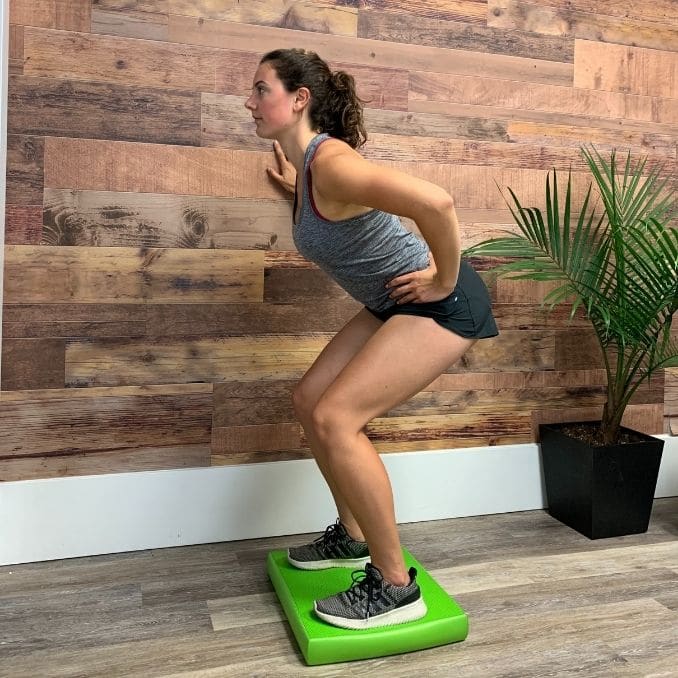 The squat is a functional movement, meaning it is a movement pattern that you perform regularly throughout your daily life. Think about bending down to pick something up. In order to do this safely, you need to be able to keep your balance and use the correct muscles.
The squat is a functional movement, meaning it is a movement pattern that you perform regularly throughout your daily life. Think about bending down to pick something up. In order to do this safely, you need to be able to keep your balance and use the correct muscles.
Begin by standing on the balance pad (or pillow/blanket) with your feet hip-distance apart. Use a wall or chair for support if needed. Sit your bum back behind you as if you were going to sit in a chair, keeping your weight mainly in your heels. Squat down to a comfortable level, keeping your chest high.
Press through your heels and squeeze your glutes to rise back up to a standing position, incorporating balance exercises to avoid falls.Perform 1-3 sets of 10 repetitions.
Modifications: If using a balance pad is too difficult, perform the squat without the equipment. To make this exercise more difficult, do not use the support of the wall or chair.
2. Calf Raises
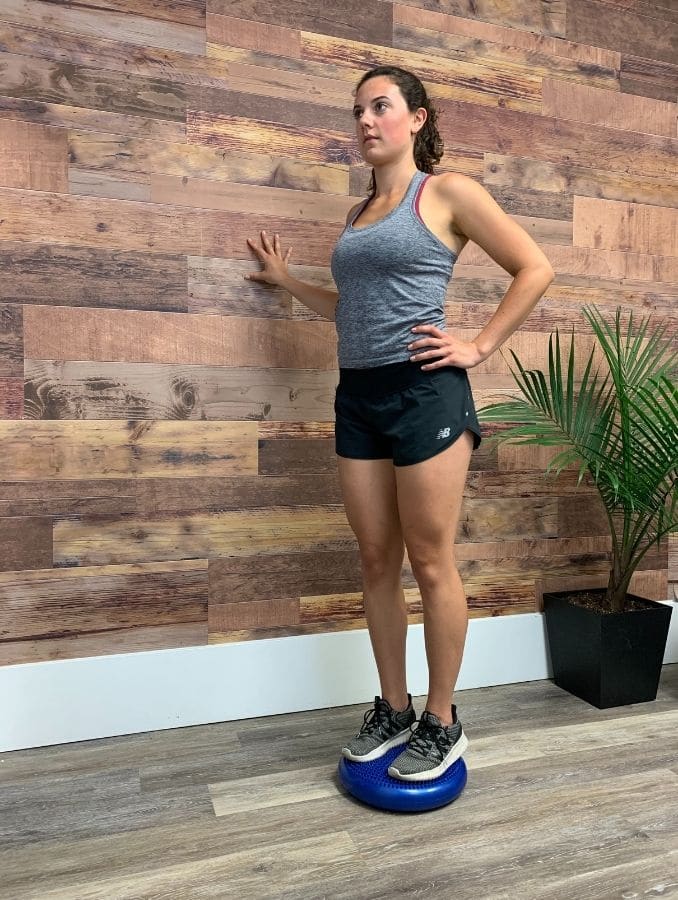 |
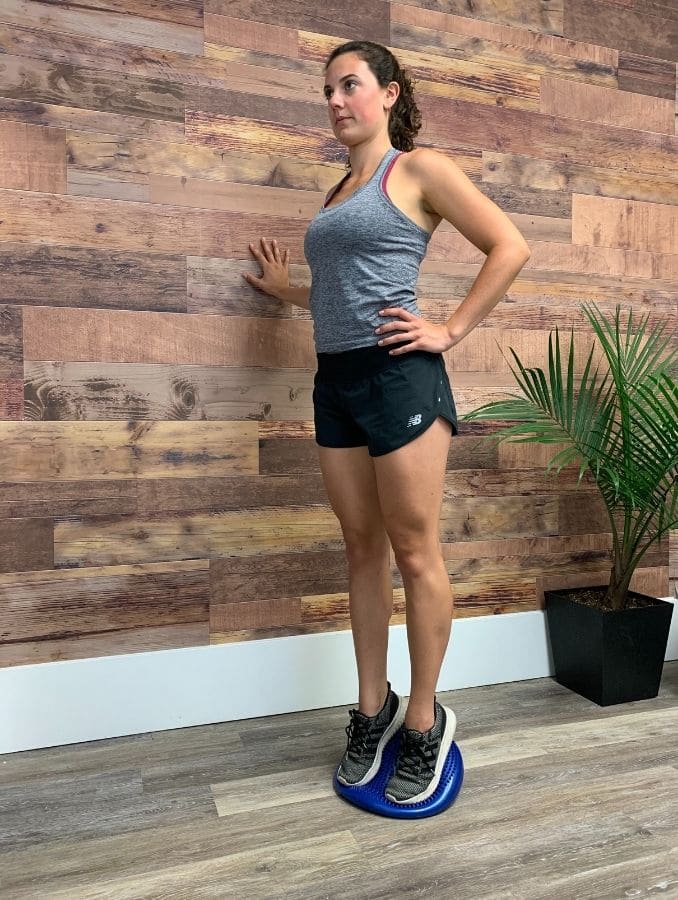 |
Calf raises are another movement pattern that you perform every day, for example, when we reach for something. Integrating balance exercises into your routine can help strengthen these muscles and avoid falls.Our calf muscles are also important for every single step we take. This balance-focused version of calf raises will help improve your balance and strengthen your calf muscles.
Begin by standing on the balance pad with your feet hip-distance apart. Use a wall or chair for support if needed. Raise onto your toes as high as you can, pausing for a moment at the top of the movement. Lower down slowly back onto your heels.
Perform 1-3 sets of 10 repetitions.
Modifications: If this exercise is too difficult, do not use the balance pad. To make this exercise more challenging, do not use any support. To make the exercise even more challenging, do a single-leg calf raise.
3. Toe Taps
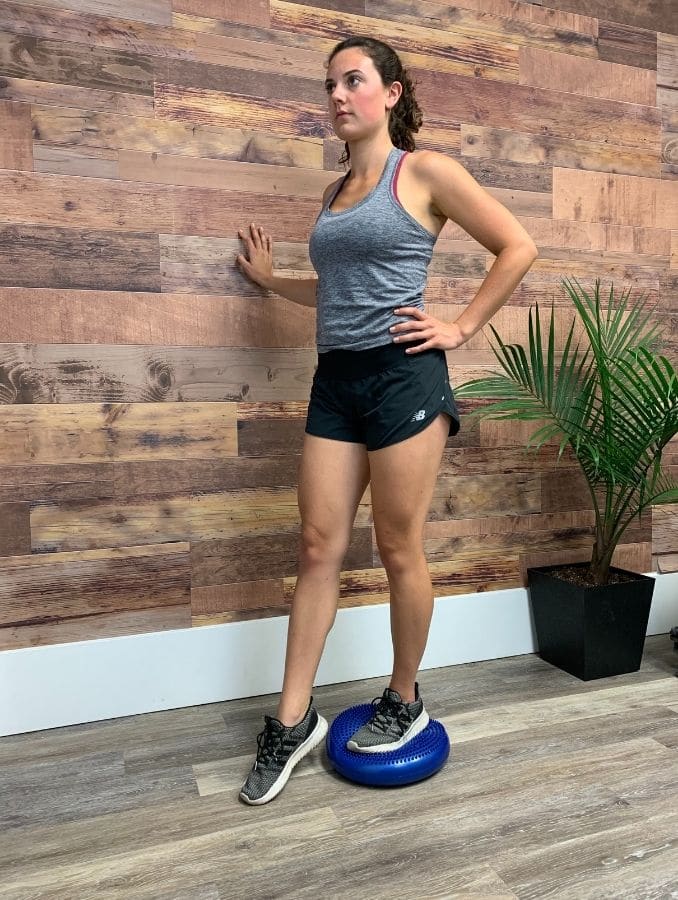 |
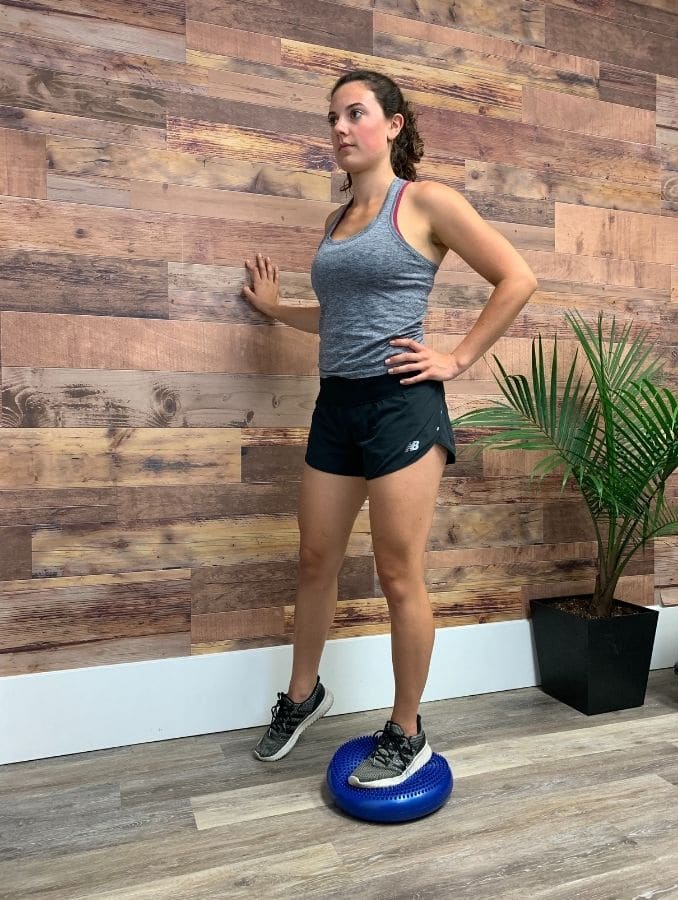 |
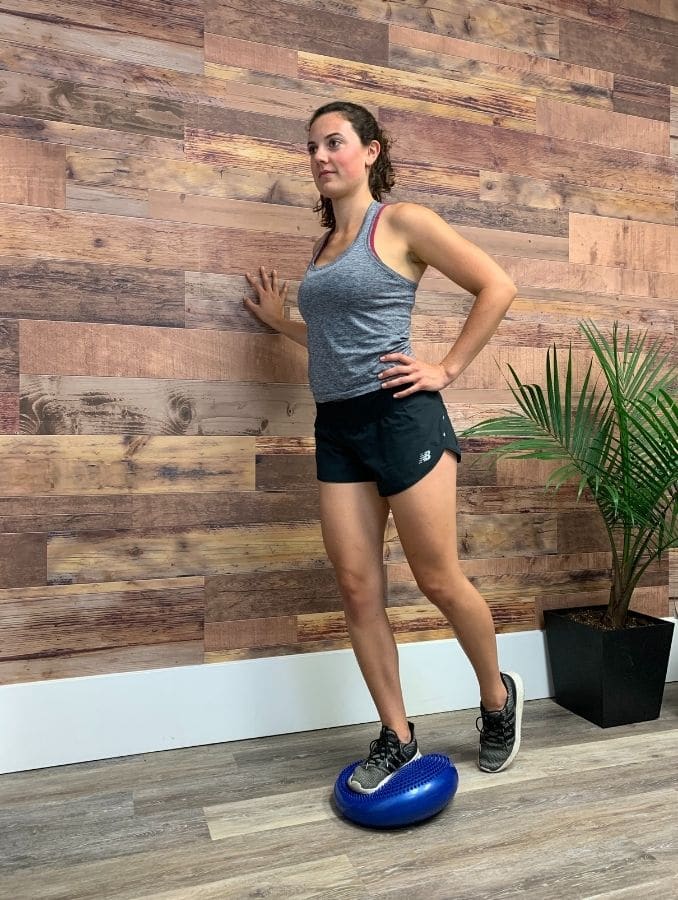 |
This exercise will challenge your core strength, which is essential for balance and stability.
Begin by standing on one foot in the center of the balance pad. Use the wall or a chair for added support if needed. Keep your supporting knee soft to avoid hyperextension. Move your other leg to tap your toes on the floor in front of you. Bring your leg back to the center position, then tap your toes on the floor at your side.
Finally, bring your foot back to the center position, then step tap your toes on the floor behind you. Consider this sequence of movements one repetition. Keep your core engaged throughout the entire sequence and try to keep your body as steady as possible.
Perform 1-3 sets of 5 repetitions on each side.
Modifications: If using the balance pad is too difficult, do this exercise on the floor. To make this more challenging, do not use any added support. You can also step your toe out further away from you to make this exercise more difficult.
4. Single Leg Deadlift
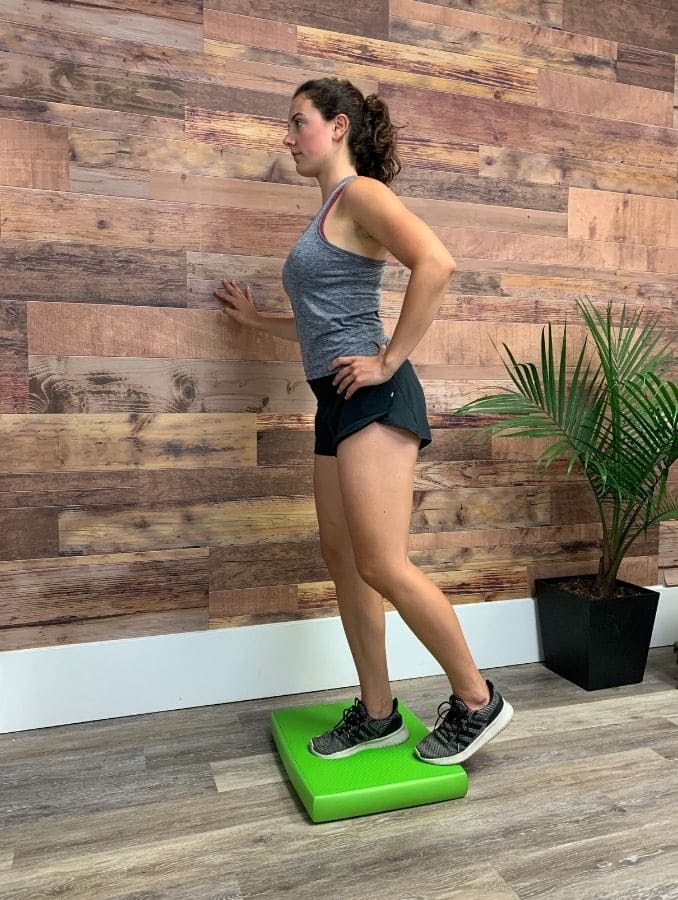 |
 |
The single-leg deadlift helps to activate your stabilizing muscles, such as your glutes and core. Using only one leg will help to challenge and improve your balance.
Begin by standing on one leg in the center of the balance pad, keeping your supporting knee soft. Hinge slowly at your hips, raising your other leg up behind you as you lean forward with your upper body. Keep your spine long and core engaged. Squeeze your glutes and slowly return to the starting position.
Perform 1-3 sets of 10 repetitions on each side.
Modifications: If this exercise is too difficult, go through the movement without the balance pad. You can also choose to hinge minimally, just bringing your back toes slightly off the floor.. To make the exercise even easier, do a regular deadlift with both feet flat on the floor. To make the exercise more difficult, do not use the support of the wall or chair.
We hope you try out these exercises and get strong and stable. Concentrating on your strength and stability as you age is essential to avoiding falls and maintaining your independence.
Learn the best kept secret for decreasing your chance of falling and maintaining your independence here.
Unlock your potential with the Balance Training Handbook! Dive into a world of stability, strength, and agility. Elevate your fitness routine and conquer new challenges. Get your copy now and embark on a journey to balance mastery!




